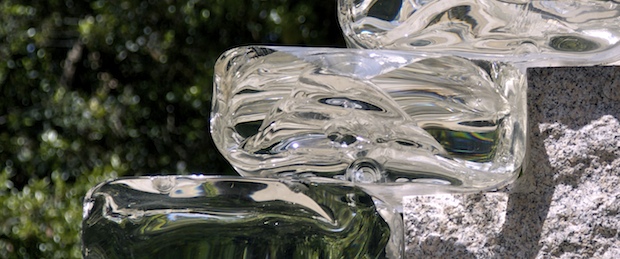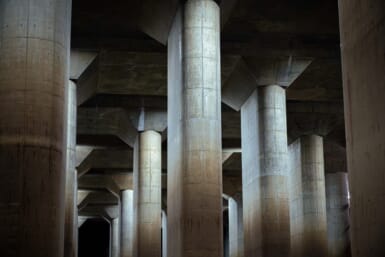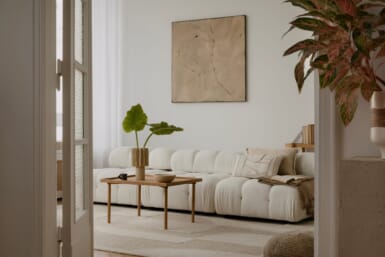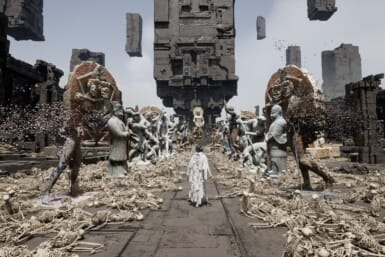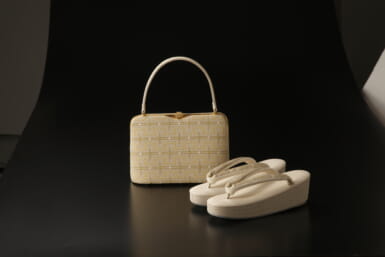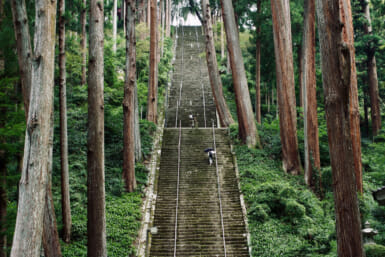Go'o Shrine - Hiroshi Sugimoto, all photos: Owen Schaefer
One of the biggest draws of Naoshima is the Art House Project — a series of abandoned houses and buildings in the island’s Honmura district which have been handed over to well known artists and turned into permanent art sites.
Honmura is one of the most picturesque Japanese towns you’ll ever see, although I suspect that this is partially or entirely due to a tourism based clean up. And the Art Houses are scattered throughout its streets, tended to by local volunteers, who are refreshingly genuine when answering questions; they may not always know or care all that much about the artist’s intentions, but they’re proud of the history of the town.
But when you decide to establish works of art as part of a community, it means that you are handing the works over, not to a collector or the gallery-going public, but to the neighbourhood and the people that live around it. This is certainly clear in Hiroshi Sugimoto’s Go’o Shrine. Still (or perhaps again) a working shrine, there is a donation box, a hand-washing fountain, and a set of simple glass stairs that lead from underground up to the shrine doors and seem a fittingly otherworldly ascension for whatever kami traditionally presides there. While you can’t get very close to the shrine itself, the fact that it is untouchable is simply a part of its role as a sacred space. This is a shrine that has gone back to serving the people as it always has.

Haisha - Shinro Ohtake
The same does not hold true of all Art House Projects, however. These works are purely intended to be art installations, and not live-in houses. Each seems to have its own degree of “untouchablility” — extending from “Please take off your shoes,” right up to “Please leave all large bags at the door. Place your camera in your purse or bag and close the zipper. Hold your purse in front of you. And do not touch anything, not even the walls.”
One such example is Haisha — Shinro Ohtake’s almost sculptural re-imagining of what used to be a village dentist’s office, (fittingly, haisha can be translated as either “dentist” or “abandoned place.”) Inside, from the plastic-protected floor to the ceiling, it is a collage of collected documents, from magazines and postcards to personal letters, along with a few thickly painted abstract murals. The effect is of a dentist’s waiting room that has exploded — all of its papers, letters, and magazines now plastered against the walls. In one room, a two-storey Statue of Liberty stands, rising up through the floorboards, the room itself plastered with Americana. Perhaps the doctor had a fascination with New York. In another, boat shapes have been cast into one wall, making suspiciously human-sized alcoves.
Here, Ohtake has left the sense of a building once lived in, but it is made strange by the need to keep your arms at your sides. In a gallery environment, not touching the art is simply a matter of not touching the art. But here, the very walls are verboten. The feeling that one gets of exploring a once-abandoned work-place and home is constantly being usurped by the fact that you are curbing any urge to touch the surface of that painted wall, run a finger over the lacquered postcard, or even to brush the doorframe as you turn the corner. When has a house ever been so uncomfortable?
Of course, it makes a practical kind of sense. In a house such as Hiroshi Senju’s wonderful Ishibashi, it is understandable that you are not to touch the painted fusama. It wouldn’t take long for curious fingers to remove the paint just by rubbing. But there is one building not counted among the Art House projects — not even in Honmura, but in neighbouring port-town Miyanoura — that stands opposite to this idea, and ironically…it is also a work by Shinro Ohtake.

I Love Yu - Shinro Ohtake
When Ohtake refinished the local public bath, it was fitted with the cheesy-cute name: “I Love Yu” — in Japanese, the “Yu” is written as the character for hot water, or bath. Now decked out in full Ohtake style, the bath sports a decorative fountain out front with a penguin statue, a men’s-magazine-style cutout over the door, and all manner of odd objects worked into the outside walls.
Inside, the fully-operating sento becomes something beautiful. The wall dividing the men’s and women’s sides is topped by an enormous elephant sculpture (a motif that continues in different spots around the building). A unlikely garden of cacti has been greenhoused along one wall, and coloured light streams in through the room’s stained-glass ceiling.
And you can touch anything you want. Except, perhaps, the other customers.
So here, almost inexplicably, is a work by the same artist whose work is so untouchable in Haisha. And what is the difference? If Haisha had been constructed in such a way that viewers could do it little harm though regular wear and tear, would it be any less striking? Ohtake’s sento is easily as entertaining, clever and quietly subversive as Haisha. Perhaps even more so. And so much the better for being a genuine living part of the community. Compared to “I Love Yu,” Haisha feels as much an unapproachable shrine as the one atop Sugimoto’s glass stairs.
-Owen Schaefer

